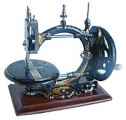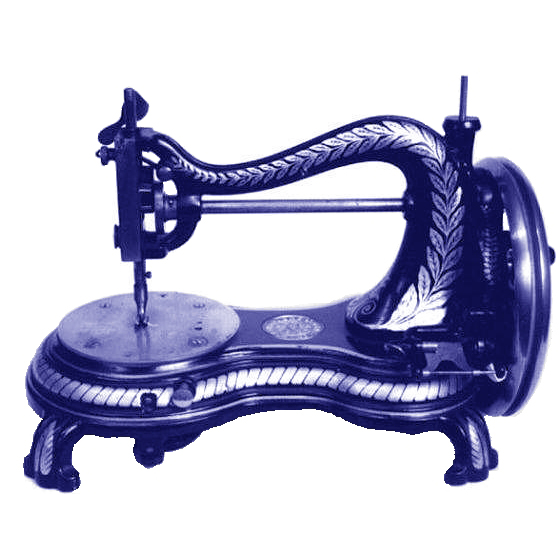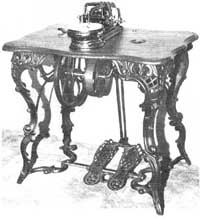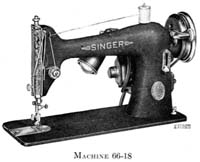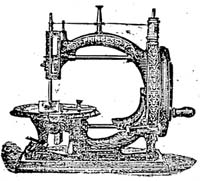Slave Girls
by Graham Forsdyke
ISMACS News
Issue No. 33
WHILE MANY journals and worthy organizations decried the sweated labor used in the sewing-machine industry in the 1880s, the Chicago Times went one step further into its investigation of the state of those who worked in the garment industry.
Under the heading "city slave girls" the Times ran for several weeks a series of stories which were said to make its readers "flesh creep and their souls grow hot with indignation against the heartless vultures in human form who are grinding the flesh and blood of women and girls into grists for their own enrichment."
The newspaper justified its investigation in these emotive words:
" The old oft-quoted Song of the Shirt once filled the world with horror at the cruel condition of the pauper labor of its day, but the songs of the cloaks, the jerseys, the coats, the vests, the trousers and the many other articles which are in these days chanting their own laments of exquisite suffering and woe constitute a chorus that overwhelms into insignificance the dubious wail of the old, sad song".
What the Times did was in the best traditions of crusading, investigative journalism obviously a fore-runner of the Washington Post's Watergate exposure.
It sent out a lady reporter in the garb of a poverty-stricken working girl to get work in both high-tone establishments and in sweating dens. She also interviewed all the workers that she could approach and then wrote of what she had seen and heard in a graphic style that "raised the hairs of the vampires who are waxing fat on human lives".
The lady reporter whose pen name was Nell Nelson was an accomplished needle worker, but was said to be sadly deficient in the skill required to handle a power-run sewing machine. In one of her graphic pen pictures of a sweating shop she tells of meeting a recently-immigrated English girl. One story in the long series ran thus:
" Someone passed the news that a girl was asleep in the lavatory which was formed by a simple board partition at one end of the room.
" Sure enough, there was the poor girl sitting in the dirty place, her head resting against a folded apron, breathing the foul air which reeked with filth and disease.
" The walls of the closet were black with pencil marks, the floor was strewn with lint and threads and the pale face of the sleeper looked ghastly in the darkness.
" She was awakened and found to be sick. We helped her to a window where a place was found for her. We rubbed her temples, chuffed her hands, bathed her head and later, as I sewed away at my buttonholes, she told me her story.
" Rose and I are only six months in this country. We came from England with our brother and live on Carpenter Street.
" The climate doesn't agree with me and I am sick all the time.
" At first we worked at Marshalls Fields and Rose and I made fringe. We got $7 a week and were so happy.
"It was awfully nice there. We didn't have to pay for drinking water or anything like here. There were lots of towels, whole cakes of soap, and it was also clean.
" We had a foreman over us and he was as good as a brother. Sometimes we let our money lay and drew it in a pile, oh such a lot it was.
" We put away very much of it, but I got sick and all we'd saved went for doctor and medicine.
" Then the work stopped. They took our names, though, and promised to send for us in the Fall. For a while we worked at the box factory but had we stayed it would have been to starve.
" Then we went to Ellingers and made cloaks at 30 cents each but it was so hard and we couldn't please them no matter how hard we tried. We came here today, but it's only a fit place to starve in. All the work they gave me was a dozen jerseys to button. That's 11 cents a row. I had two dozen holes to finish at 16 cents. 27 cents for the two of us, how can we live on it? And the child began to cry again.
" After meeting this girl our authoress, who had been paid 5 cents for finishing black jerseys, went to the company shop and asked to buy one. it was offered to her for $2. "

